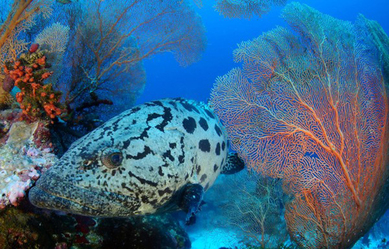 Potato Cod in the Seychelles outer islands, photo by Manu San Felix/ Pristine Seas Potato Cod in the Seychelles outer islands, photo by Manu San Felix/ Pristine Seas The official launching of the 30-minutes long National Geographic film took place last Friday at the STC Conference Room. In September 2014, Bill Clinton, former president of the USA announced, that Seychelles will be one of the destinations of the NatGeo's Pristine Seas project. Only 6 months later, the team of 10, including 4 scientists, arrived to Seychelles to conduct the program: an interesting amalgam of scientific research, popularly presented by the efficient media tools of National Geographic. The result is a viewer-friendly film for any audience, with footage made with deep-cameras, drop-cameras, pelagic cameras and our mini-helicopters for aerial photography. The project's not-hidden aim is to influence decision-makers to protect certain regions of the sea. BBC journalist Paul Rose, the expedition's leader knows the islands profoundly, having been worked for many years on a marine science project in Seychelles. He told in the NSA interview that the coral bleaching events of 1998 really damaged the marine ecosystem, but it is slowly recovering, which shows the health of the Seychelles waters. He also added "… you never see this color of water anywhere else in the world" and during one of the dives, a chief scientist just stopped his work – while recording fish – just to enjoy the dive, rating it as one of his top ten dives in the world. Hajira Amla's article, the "National Geographic expedition leader rates Seychelles ocean, coral health among best in the world" (March 21, 2015) is available on the Seychelles News Agency's webpage. More information and video about the National Geographic expedition is available here. |
Archives
October 2017
Categories
All
|
Aldabra Expeditions - Eco and Dive cruise with Silhouette Cruises Ltd
|
LOCATION
|
|

 RSS Feed
RSS Feed